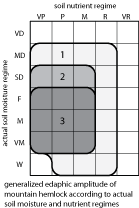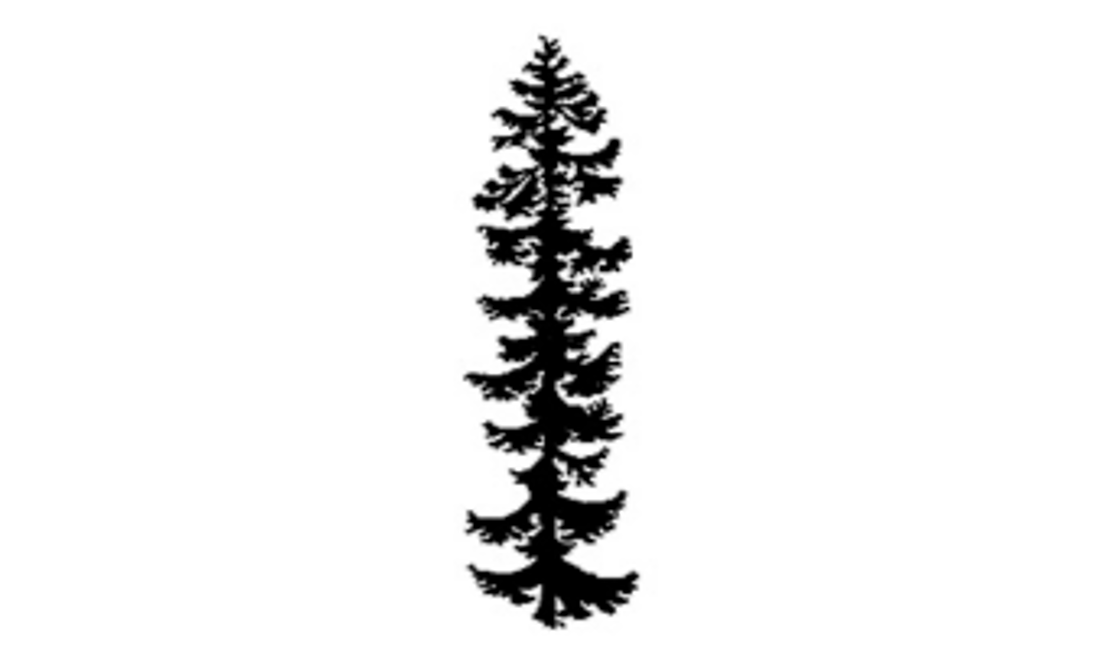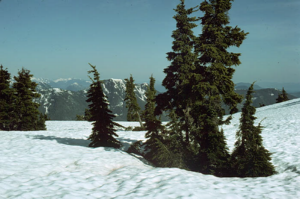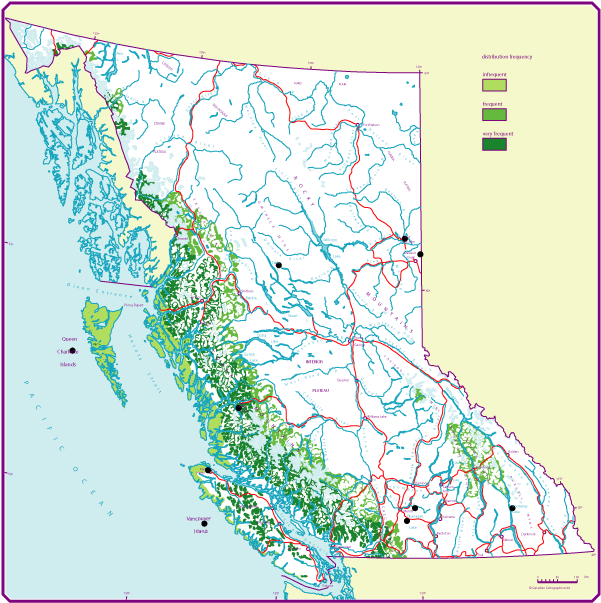Mountain hemlock
On this page
Geographic range and ecological amplitudes
Description
Mountain hemlock is a prevailingly coastal, high-elevation, tree species. It is a small - to medium-sized (exceptionally >45 m tall), evergreen conifer, at maturity with a narrow conical crown; leader droops only slightly, branches droop or spread but tend to have an upward sweep at the tips; dark, reddish-brown bark is scaly and divided into hard, narrow, flat-topped ridges. Its moderately strong, light-coloured wood is used for small dimension lumber and pulp.
Geographic range
Geographic element:
Western North American/Pacific and less Cordilleran
Distribution in Western North America:
north, central, (and south) in the Pacific region; central (and south) in the Cordilleran region
Ecological amplitudes
Climatic amplitude:
(alpine tundra) - subalpine boreal - cool temperate - cold (and cool) mesothermal
Orographic amplitude:
(submontane - montane) - subalpine
Occurrence in biogeoclimatic zones:
(lower AT), MH, ESSF, (upper and northern CWH)
Edaphic amplitude

Range of soil moisture regimes:
(moderately dry) - slightly dry - fresh - moist - very moist - (wet)
Range of soil nutrient regimes:
very poor - poor - medium - (rich); oxylophyte
Mountain hemlock may grow under the influence of the mesothermal climate prevailingly in acidic bogs in the central and northern hypermaritime portion of the CWH zone. Like western hemlock, mountain hemlock also tolerates very poor soils. It regenerates well on acid forest floors (Mors) and coniferous decaying wood (Lignomors).
Tolerances and damaging agents
Root system characteristics
Mountain hemlock is usually shallow-rooted, with fine and coarse roots confined to the forest floor. Roots are intensely mycorrhizal with both ecto- and endo-mycorrhizae.
| Tolerance to | Tolerance class | Comments |
|---|---|---|
| low light | M | less tolerant than Pacific silver fir |
| frost | M | tolerance of roots is low |
| heat | L | insolated sites are infrequent |
| water deficit | L | higher tolerance than that of Pacific silver fir |
| water surplus | M | on wet sites, it usually grows on mounds |
| nutrient (mainly N) deficiency | H | frequent in strongly acid, very poor soils |
Frost resistance of mountain hemlock is evidently higher than that of western hemlock. However, it is doubtful if mountain hemlock would survive completely frozen ground for a prolonged period. One year-old mountain hemlock and western hemlock seedlings were killed when their roots were solidly frozen for ten days, while subalpine fir and Engelmann spruce seedlings survived such treatment (Krajina 1969). Heavy snow cover as insulation is necessary to ensure the survival of mountain hemlock, as well as western hemlock.
| Damaging agent | Resistance class | Comments |
|---|---|---|
| snow | M | less resistant, more resilient - a timberline species; protection-requiring on high snowpack sites |
| wind | L | very low resistance to windthrow |
| Risk class | ||
|---|---|---|
| fire | L | not a major concern in MH and wetter CWH |
| insect | L | not a major concern in MH and wetter CWH |
| fungi | L | not a major concern (e.g., Indian paint fungus, annosus root and butt rot, and laminated root rot) |
| other agents | M | dwarf mistletoe (Arceuthobium tsugense (Rosendahl) Jones) |
Associated tree species and successional role
In British Columbia, mountain hemlock grows in broadly even-aged and uneven-aged, mixed-species stands, less frequently in pure, even-aged stands (after fire disturbance). It is often a pioneer species on colluvial sites, and is present in early, mid-, and late stages of secondary succession. It is a major component on old-growth stands in the MH zone and wettest ESSF subzones.
| Associated tree species |
Occurance class | Major area of occurance |
|---|---|---|
| pacific silver fir | H | one of the most common associates |
| alaska yellow-cedar | H | one of the most common associates |
| subalpine fir | L | parkland MH and the wettest ESSF |
| engelmann spruce | L | the wettest ESSF |
| sitka spruce | L | hypermaritime MH |
| western hemlock | L | upper ICH and CWH |
Genetics and notes
Genetics
Individuals morphologically intermediate between western hemlock and mountain hemlock are occasionally found where the two species occupy the same site. They have been given hybrid status: Tsuga x jeffreyi (Henry) Henry.
Notes
Perhaps the most important use of mountain hemlock is for watershed protection and recreation. It is uncertain to what extent it will be managed solely for timber production; however, its wood, especially from old-growth is even more valuable than that of western hemlock. More detailed silvics information is given by:
Means, J.E. 1990. Tsuga mertensiana. Pp. 623-634 in R.M. Burns and B.H. Honkala (technical coordinators) Silvics of North America, Vol. 1. Agri. Handbook 654, USDA For. Serv., Washington, D.C.

This is the general shape and outline of the mountain hemlock.

Mountain hemlock is characteristic of the coastal subalpine forest of western North America. This picture shows a tree island of mountain hemlock in the upper southern maritime MH parkland in early spring in the Coast Mountains.

